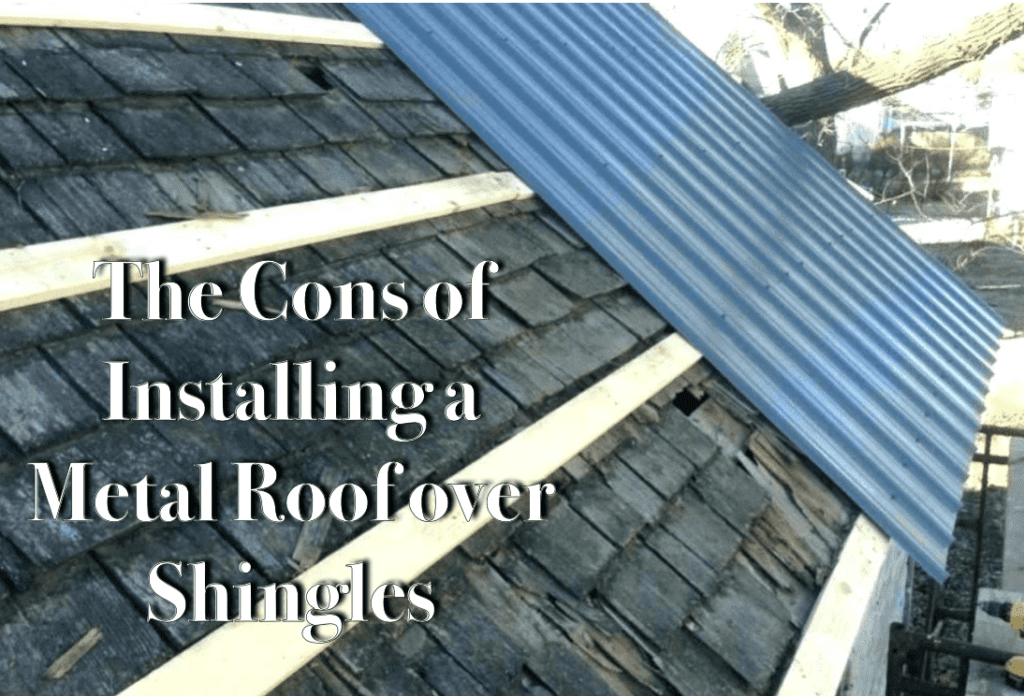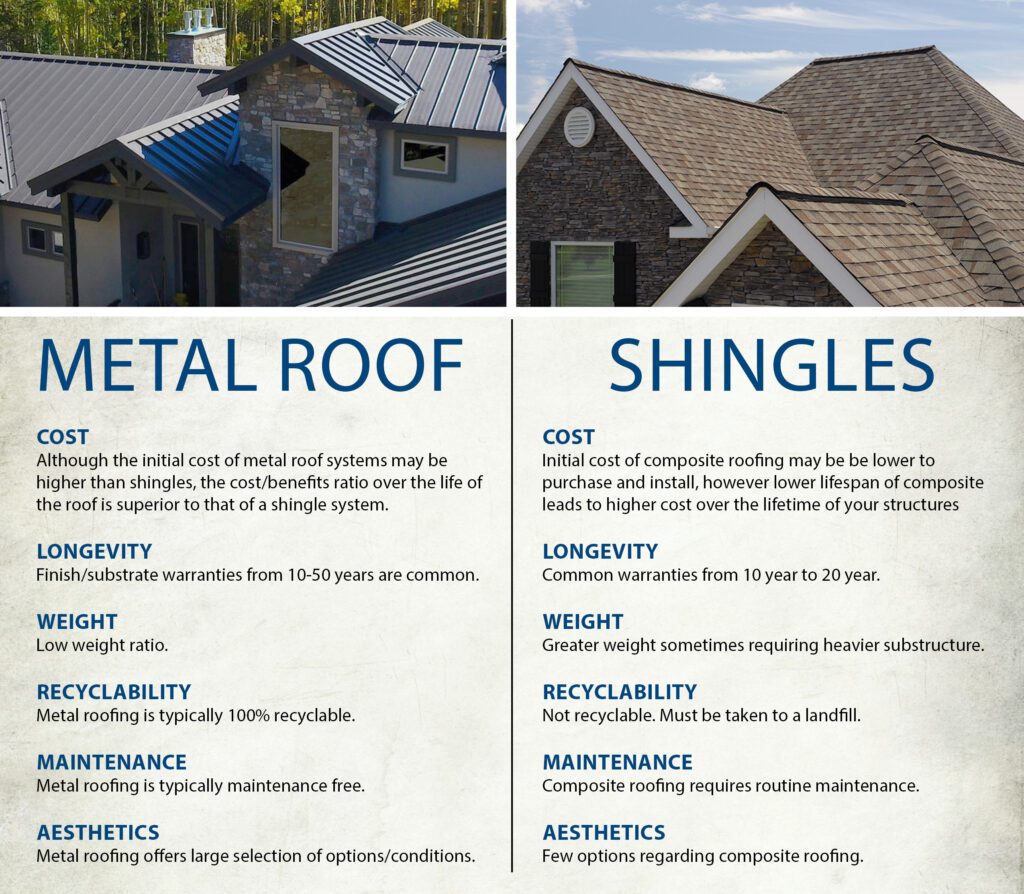If you’re considering upgrading your roof, you may have wondered about the pros and cons of putting a metal roof over shingles. While some homeowners swear by this method as a cost-effective solution, others raise concerns about potential drawbacks. In this article, we’ll explore the advantages and disadvantages of installing a metal roof over shingles, helping you make an informed decision for your home. Whether you’re looking to enhance durability, improve energy efficiency, or simply give your home a fresh new look, read on to discover the key factors to consider before embarking on this roofing venture.
Pros of Putting Metal Roof Over Shingles
Cost-effective
One of the major advantages of putting a metal roof over shingles is the cost-effectiveness. Installing a metal roof over existing shingles can save you money compared to completely replacing the old shingles. The installation process is typically quicker and less labor-intensive, which translates to lower labor costs. Additionally, because the shingles act as a base layer, there is no need for the added expense of removing and disposing of the old roofing material.
Time-saving
Metal roof installation over shingles can significantly reduce the time required to complete the project. By opting to put a metal roof over shingles, you eliminate the time-consuming process of tearing off and disposing of the existing roofing materials. This can be particularly advantageous if you have limited time or if the weather conditions are not ideal for an extended roofing project. In many cases, the installation of a metal roof over shingles can be completed in just a fraction of the time compared to a full roof replacement.
Energy-efficient
Metal roofs have excellent energy-saving properties, and by installing them over shingles, you can enhance the energy efficiency of your home. Metal reflects a significant portion of the sun’s rays, reducing heat absorption and keeping your home cooler during hot summer months. This can lead to reduced energy consumption and lower cooling costs. Additionally, metal roofs often have insulation options that can further improve the energy efficiency of your home by reducing heat loss during the winter months.
Increased durability
Metal roofs are renowned for their durability and longevity. By placing a metal roof over shingles, you can benefit from the increased strength and durability of the two-layer system. The shingles act as an additional protective layer, shielding the metal roof from potential damage caused by external factors such as hail or debris. This added layer of protection extends the lifespan of your roof, making it more resistant to wear and tear, and reducing the need for frequent repairs or replacements.
Easy installation
Installing a metal roof over shingles is relatively straightforward compared to a complete roof replacement. The existing shingles provide a stable foundation for the metal panels, allowing for easier and more efficient installation. This ease of installation can save you both time and money, especially if you hire professional roofing contractors who specialize in metal roof installations. The simplified installation process also minimizes disruptions to your daily routine and reduces the overall inconvenience of a roofing project.
Fire-resistant
Metal roofs are inherently fire-resistant, and by placing them over shingles, you add an extra layer of protection against fire hazards. Unlike traditional roofing materials such as wood or asphalt, metal is non-combustible and does not contribute to the spread of fire. This can provide you with peace of mind, knowing that your home is better protected in case of a fire incident. Additionally, a metal roof can potentially help you obtain lower insurance premiums, as many insurance companies offer discounts for homes with fire-resistant roofs.
Environmentally friendly
Choosing to put a metal roof over shingles can be an environmentally friendly option. By reusing the existing shingles as a base layer, you reduce waste generated from the removal and disposal of the old roofing materials. Metal roofs are also highly sustainable, as they are often made from recycled materials and can be recycled again at the end of their lifespan. Moreover, the energy-efficient properties of metal roofs contribute to reducing carbon emissions by reducing the demand for heating and cooling energy.
Enhanced aesthetic appeal
Metal roofs can add a touch of style and uniqueness to your home’s exterior. With a wide range of colors, finishes, and designs available, you can choose a metal roof that complements your home’s architectural style and personal preferences. By installing a metal roof over shingles, you can retain the charm and character of the original shingles while benefiting from the enhanced aesthetic appeal of the metal roof. Metal roofs also tend to stay looking newer and more visually appealing for a longer time compared to traditional roofing materials.
Reduced maintenance
Metal roofs require minimal maintenance compared to other roofing materials, and by placing them over shingles, you can further reduce the maintenance requirements. The shingles act as an additional protective layer, shielding the metal roof from debris, UV rays, and other environmental elements. This can help prevent the accumulation of dirt, moss, or algae on the metal surface, which often requires regular cleaning on roofs without a shingle base layer. With proper maintenance, a metal roof installed over shingles can retain its optimal condition and appearance for many years.
Added insulation
Installing a metal roof over shingles provides an opportunity to improve the insulation of your home. Depending on the specific metal roofing system chosen, you can benefit from enhanced insulation properties that help regulate indoor temperatures. The combination of the shingle layer and the metal roof can create an added barrier against heat loss, improving energy efficiency in colder climates. This can translate into lower heating costs and a more comfortable living environment all year round.

Cons of Putting Metal Roof Over Shingles
Increased weight
One of the drawbacks of putting a metal roof over shingles is the increased weight on your roof structure. Metal roofs are generally heavier than shingles, and adding another layer of roofing material can further strain the underlying structure. It is crucial to ensure that your roof’s framework is strong enough to support the additional load. Consulting with a structural engineer or a professional roofing contractor is essential to assess the capacity of your roof and determine if any reinforcements are necessary before proceeding with the installation.
Potential for trapped moisture
Installing a metal roof over shingles can create a potential moisture issue. If moisture gets trapped between the layers, it can lead to the accumulation of moisture and result in mold, mildew, or rot. Proper ventilation and insulation are essential to mitigate this risk. Adequate airflow should be ensured to allow moisture to escape, preventing any potential damage to the roof structure or the shingles themselves. It is crucial to consult with a roofing professional who can evaluate your roof’s ventilation requirements and implement the necessary measures to prevent moisture buildup.
Difficulty in detecting underlying issues
One of the challenges of adding a metal roof over shingles is the difficulty in detecting underlying issues with the existing shingles. Damaged or deteriorated shingles may not be easily visible, potentially hiding problems that could affect the overall integrity of the roof. Thoroughly inspecting the shingles before the metal roof installation is vital to identify any areas that require repair or replacement. Hiring a professional roofing contractor with experience in metal roof installations can help ensure a comprehensive evaluation of the shingles and address any underlying issues before proceeding with the installation.
Voided warranties
Installing a metal roof over shingles may void certain warranties of the metal roofing manufacturer. Some manufacturers require the metal roof to be installed directly on the roof deck to honor their warranty policies. It is crucial to review the warranty terms and conditions provided by the metal roofing manufacturer before deciding to install a metal roof over shingles. Contacting the manufacturer or consulting with a roofing professional can help you understand the warranty implications and make an informed decision.
Reduced fire resistance
While metal roofs are naturally fire-resistant, placing them over shingles can potentially reduce their fire resistance. The shingles, especially if made of flammable materials, may compromise the fire resistance properties of the metal roof system. It is essential to verify the fire ratings and requirements of the metal roofing materials and consult with a professional to ensure compliance with local fire safety regulations.
Limited roofing options
Choosing to install a metal roof over shingles may limit your options for future roofing updates. Once the metal roof is in place, it can be more challenging to make changes or switch to different roofing materials in the future. Therefore, it is crucial to carefully consider your long-term plans and evaluate whether the versatility and flexibility of other roofing materials may better align with your future needs.
Increased heat absorption
Metal roofs, especially dark-colored ones, are known for their ability to absorb heat. By installing a metal roof over shingles, there is an additional layer that can trap heat between the two materials. This can result in increased heat absorption and potentially raise the temperature in your attic or living space, especially during hot summer months. Adequate insulation and ventilation are crucial to mitigate heat absorption and maintain comfortable indoor temperatures.
Risk of noise amplification
Metal roofs tend to generate more noise compared to other roofing materials, especially during heavy rain or hailstorms. Adding shingles as a base layer can help reduce the noise, as they act as a sound barrier. However, some noise may still be transmitted through the shingles. If you live in an area prone to heavy rainfall or hail, it is important to consider the potential noise amplification of a metal roof and assess whether it may cause discomfort or disturbances in your living environment.
Proper ventilation concerns
Proper ventilation is essential for any roofing system, including when installing a metal roof over shingles. Without adequate ventilation, moisture can accumulate, leading to potential issues such as mold growth, wood rot, or damage to the metal roof system itself. Ensuring proper ventilation requires proper air circulation through vents or other ventilation systems, taking into account both the shingle layer and the metal roof. Consulting with a roofing professional can help determine the ventilation requirements specific to your roof and ensure the optimal performance of the entire roofing system.
Professional installation required
Installing a metal roof over shingles is a complex task that requires expertise and experience. It is highly recommended to hire professional roofing contractors specialized in metal roof installations to ensure the job is done correctly and safely. Professionals have the knowledge and skills to assess the structural integrity of the existing shingles, evaluate the suitability of the roof for a metal roof installation, and implement the necessary measures for a successful installation. Investing in professional installation can provide peace of mind, knowing that your roof is properly installed and can withstand various weather conditions for years to come.
